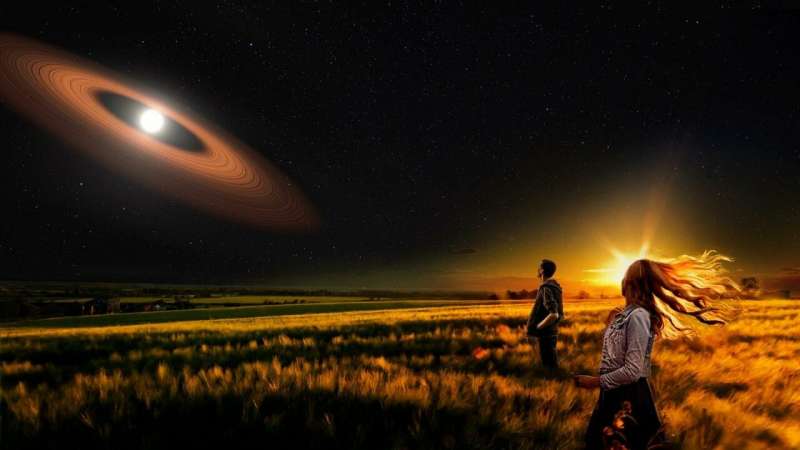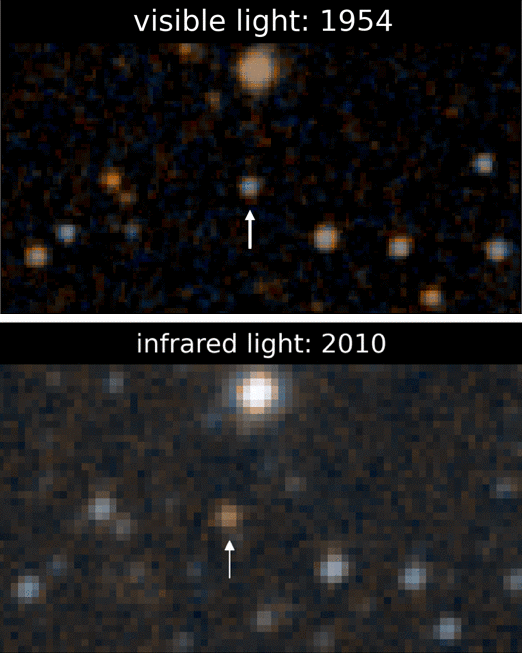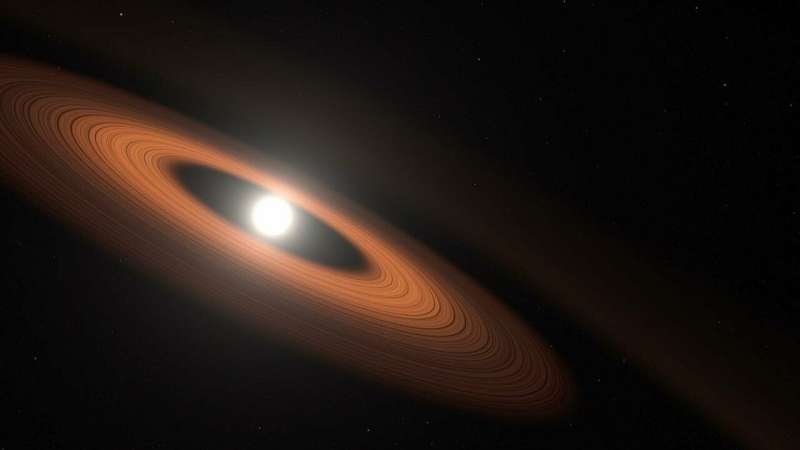Citizen scientists invited to join quest for new worlds

The Backyard Worlds: Planet 9 project re-launches this week, with a call to volunteer citizen scientists to join the search for cold worlds near the Sun. With its newly revamped online interface and equipped with twice as much data as before, the project offers new opportunities to discover planets lurking yet unseen in the outer reaches of the Solar System (e.g., Planet 9, Planet X) as well as cold nearby "failed stars" (a.k.a. brown dwarfs). The re-launch coincides with the publication of the project's latest discovery: a record-setting white dwarf star encircled by mysterious dusty rings that challenge astronomers to rethink the long-term evolution of planetary systems.
Detecting Cold Worlds in Infrared Images
With Backyard Worlds, available through the Zooniverse web portal, citizen scientists use images from NASA's WISE mission to uncover previously overlooked objects in the Sun's local cosmic neighborhood. The WISE satellite is currently surveying the entire sky at infrared wavelengths.
WISE's infrared sensitivity has the unrivaled potential to reveal extremely cold and faint new neighbors of the Sun, some of which may reside closer to us than even the nearest known star, Proxima Centauri. Such neighbors would most likely be brown dwarfs colder than room temperature, of which only a few tantalizing examples are currently known to exist.
It Takes a Village—Crowd-sourced Mining of Vast Astronomical Maps
Nearby celestial objects appear to move against the backdrop of more distant stars and galaxies, and that relative motion is used to identify members of the Sun's local neighborhood.
But no lone astronomer could single-handedly study all of the WISE images by eye to find these cold worlds; and a completely automated search is not possible due to noise and artifacts in the WISE images. Backyard Worlds' solution is an online interface that presents large cohorts of volunteers with animated "flipbooks" of WISE images in which to visually search for moving objects.

"Professional researchers routinely use supercomputers and machine learning, but there's still no substitute for the human eye when it comes to recognizing subtle motions in astronomical images," said Backyard Worlds co-founder Aaron Meisner, an astronomer at the NSF's National Optical Astronomy Observatory in Tucson, Arizona.
The crowd-sourced approach works. Since the project's inception two years ago, Backyard Worlds volunteers have discovered more than a thousand cold, nearby brown dwarfs—more than one per day!
Finding the Unexpected: an Ancient White Dwarf with Enigmatic Dust Rings
Alongside its re-launch, Backyard Worlds also announces its latest discovery, a surprising object unlike anything the team expected to find. Whereas most Backyard Worlds discoveries have been brown dwarfs, this newly published member of the solar neighborhood is a white dwarf—the faint, dense remnant of a stellar death long ago.
The white dwarf in question—LSPM J0207+3331, or J0207 for short—is unusually bright in WISE images, indicating that it's encircled by a warm, dusty circumstellar disk. Such disks are thought to result from the ongoing breakup of small rocky planetesimals in orbit around the white dwarf. But with an age of roughly 3 billion years, J0207 is colder and nearly three times older than any other white dwarf known to harbor such a disk.
The peculiar infrared properties of J0207 were first reported to Backyard Worlds researchers by citizen scientist Melina Thévenot of Germany.

"This white dwarf is so old that whatever process is feeding material into its ring must operate on billion-year timescales," said John Debes, an astronomer at the Space Telescope Science Institute in Baltimore and lead author of the J0207 study co-authored by Thévenot. "Most of the models scientists have created to explain rings around white dwarfs only work up to around 100 million years, so this star is really challenging our assumptions of how planetary systems evolve."
Adding to this puzzle, the J0207 disk may be composed of more than one distinct ring-like component, an arrangement never before seen in circumstellar material surrounding a white dwarf.
Critical follow-up of J0207 was obtained by Backyard Worlds collaborator Adam Burgasser, a professor at UC San Diego, using the Keck II telescope on the Mauna Kea summit in Hawaii, one of the world's premier astronomical observing facilities. "That is a really motivating aspect of the search," said Thévenot, one of more than 150,000 citizen scientists who have contributed to the Backyard Worlds project. "The researchers will move their telescopes to look at worlds you have discovered. What I especially enjoy, though, is the interaction with the awesome research team. Everyone is very kind, and they are always trying to make the best out of our discoveries."
More Discoveries in Store!
The newly upgraded Backyard Worlds interface is expected to unleash a new wave of additional discoveries. The rebooted edition doubles the amount of WISE data that can be examined, provides access to additional visualization resources, and incorporates upgraded image processing algorithms that better remove artifacts.
"The synergy of careful human scrutiny combined with massive computations has fueled the remarkable discoveries made by Backyard Worlds volunteers," said Meisner. "I'm excited to see what happens next!"
More information: John H. Debes et al. A 3 Gyr White Dwarf with Warm Dust Discovered via the Backyard Worlds: Planet 9 Citizen Science Project, The Astrophysical Journal (2019). DOI: 10.3847/2041-8213/ab0426
Journal information: Astrophysical Journal
Provided by Association of Universities for Research in Astronomy (AURA)





















